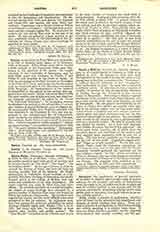

Castro Palao, FERNANDO, Spanish theologian, b. at Leon in 1581; d. at Medina, December 1, 1633. From his earliest youth he gave such proofs of sanctity that he became known as “the saint”, “the angel”, “the predestined child”. At the age of fifteen, in 1596, he entered the Society of Jesus, and here his fame for learning equalled that of his holiness. He taught philososphy at Valladolid, moral theology at Compostella, Scholastic theology at Salamanca, and finally became rector of the College of Medina, and consultor and qualificator of the Holy Inquisition. His death overtook him while he filled these last three offices. He excelled especially as a moral theologian; his classes of moral theology were attended by a greater number of students than were ever known to follow the course at Compostella. His decisions were regarded as Oracles, and the most difficult cases were submitted to him for solution. St. Alphonsus numbers him among the principal authorities on moral theology (Dissert. schol. mor., Naples, 1755, c. iv, n. 119), and Gury calls him “a probabilist, a most learned, wise, erudite, and prolific author”. His “Opus Morale” comprises seven volumes, and covers in the same number of treatises the whole field of moral theology. It appeared first at Lyons, 1631-51; its fifth edition is dated 1700. A general index to the whole work is found in the fourth volume of this last edition, and also in the third edition, which appeared at Venice in 1721. Immediately after his death (1633) there appeared at Valladolid a meditation book written by him, entitled “Manual del Cristiano de varias consideraciones para el exercicio santo de la oration”. The first part of this work presents meditations on the end of man; the second treats of the life of Christ and of His Blessed Mother; the third considers God in Himself and in His relations to us. An English translation of a letter of Father Castro Palao on the death of Father Thomas White appeared in the “Month” for 1890 (vol. 69, pp. 91-93).
A. J. MAAS

